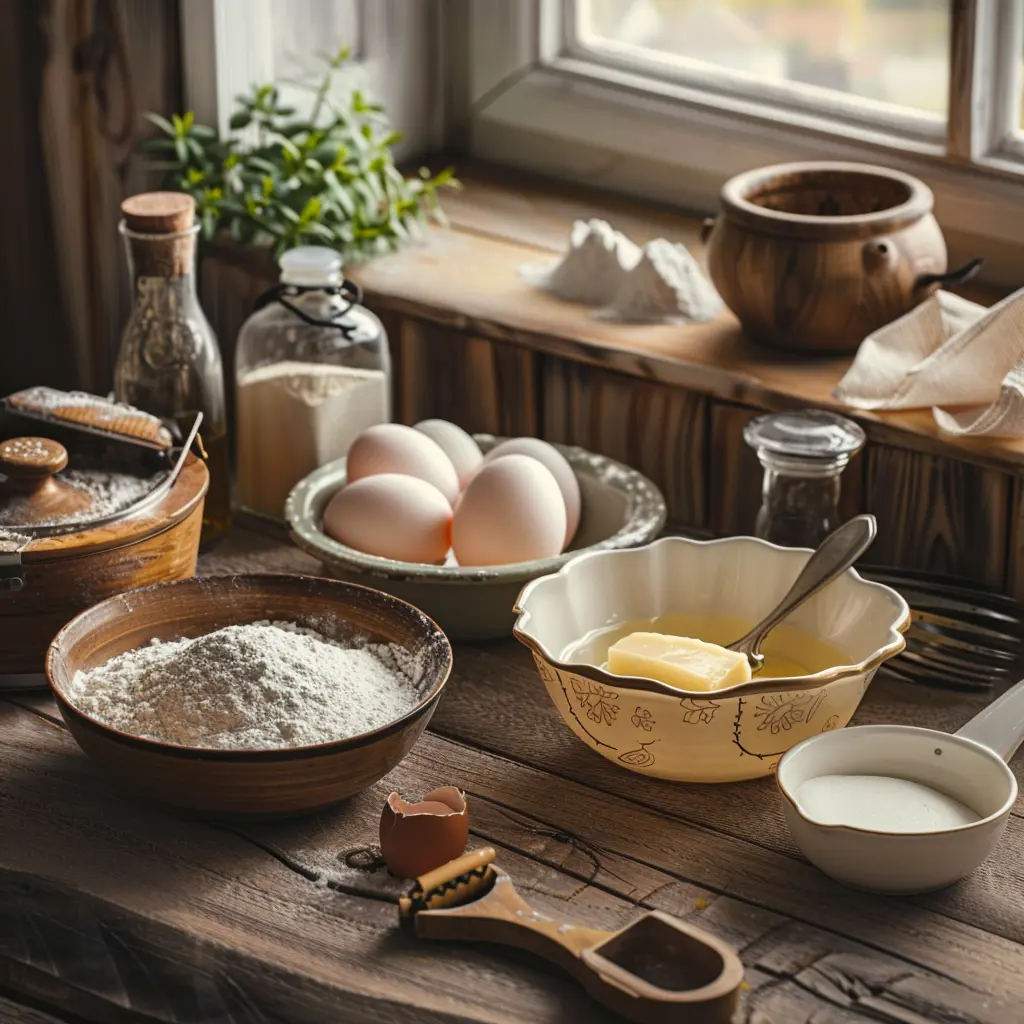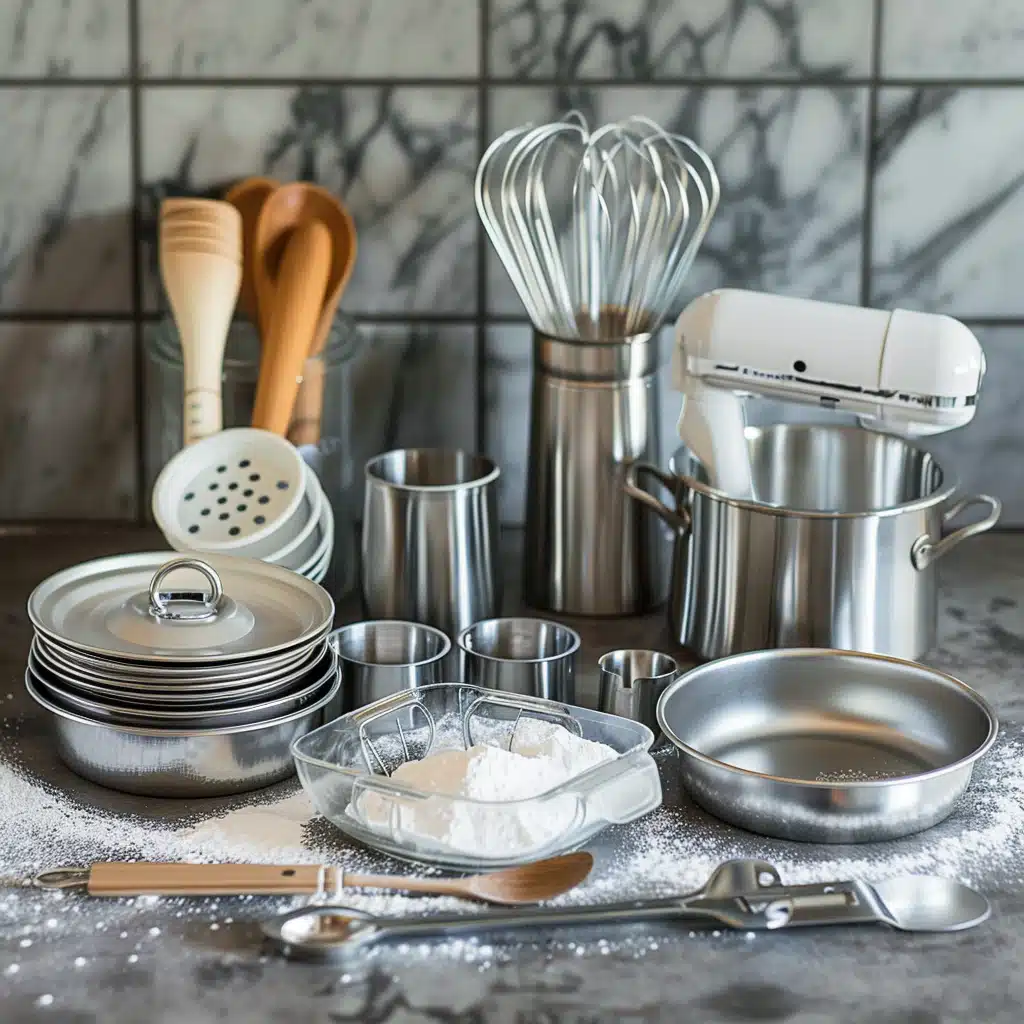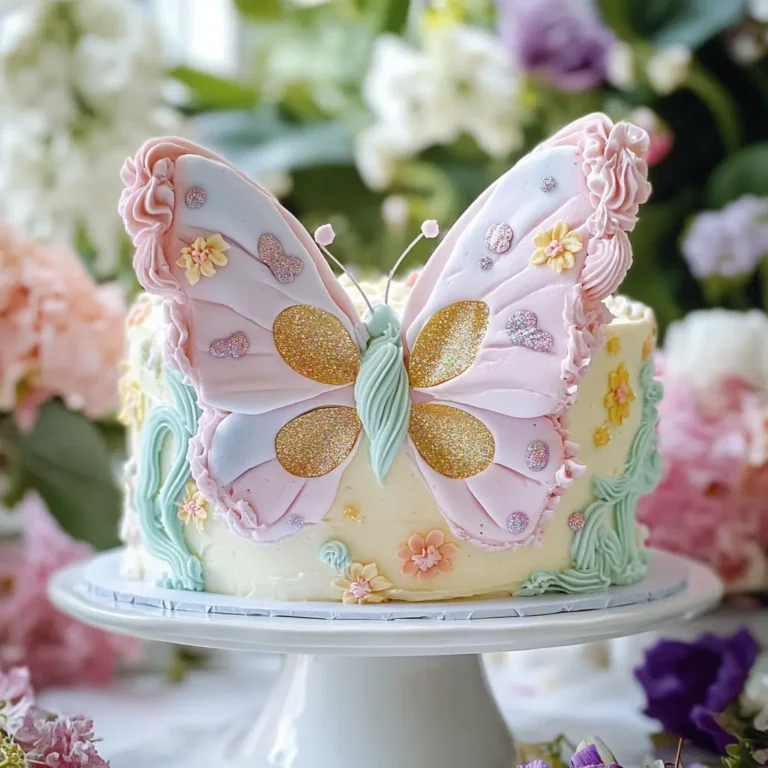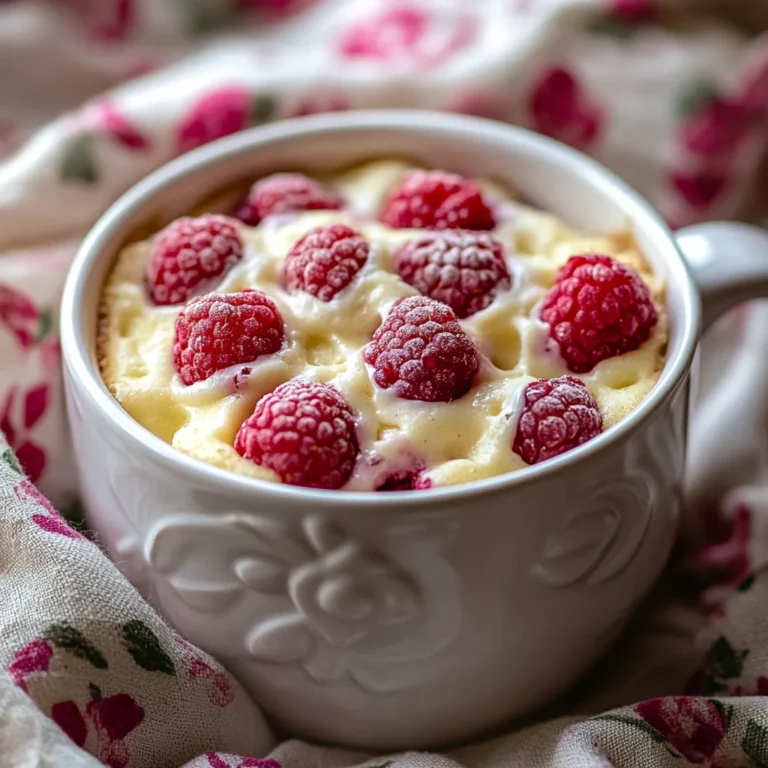How to Bake a Cake from Scratch—The Ultimate Foolproof Beginner’s Guide
Sunday morning, flour everywhere, and my eight-year-old hands barely reaching the counter. That’s my first memory of watching my grandmother show me how to bake a cake. She didn’t use fancy gadgets or perfect measurements—just love, intuition, and this magical ability to turn simple ingredients into pure happiness. Learning how to bake a cake from scratch isn’t just about following steps; it’s about creating memories, one golden layer at a time.
Why Bake a Cake at Home?
Honestly? Learning how to bake a cake changes everything about your relationship with your kitchen. When you know how to bake a cake from scratch, you become the person people call when life needs celebrating. There’s something deeply satisfying about creating something beautiful with your own hands, especially when that something makes people smile.
Store-bought cakes can’t compete with the aroma filling your house when you know how to bake a cake properly. That vanilla-scented warmth, the anticipation as you wait for the timer, the pride when you see that perfect golden rise—these are experiences money can’t buy. Plus, when you master how to bake a cake, you control every ingredient, every flavor, and every moment of the process.
But here’s what nobody tells you about learning how to bake a cake at home—it’s therapeutic. Something about creaming butter and sugar, watching batter come together, and waiting for that magical transformation in the oven. In our crazy-busy world, knowing how to bake a cake gives you permission to slow down and create something meaningful.
The real beauty is the versatility. Once you understand how to bake a cake from scratch, you can experiment endlessly. Want chocolate? Easy adjustment. Craving lemon? Simple swap. Need something impressive like our Matilda chocolate cake? You’ve got the foundation skills to tackle anything.
How to Make a Cake from Scratch (Step-by-Step)
Alright, let’s get real about how to bake a cake from scratch. I’m going to walk you through this like I’m standing right next to you in your kitchen, because that’s how my grandmother taught me, and honestly, it’s the only way that makes sense when you’re learning how to bake a cake.
First things first—and I cannot stress this enough—room temperature ingredients are your best friends when mastering how to bake a cake from scratch. I know it takes planning, but cold butter fights you, cold eggs can make your batter look like cottage cheese, and nobody wants that drama.
Step 1: Prepare Your Workspace
Preheat your oven to 350°F (175°C). I always do this first because ovens need time to actually reach temperature. Grease two 9-inch round pans with butter, then dust with flour, tapping out excess. This prevents heartbreak when your perfect cake sticks to the pan.

Step 2: Mix Dry Ingredients
In a medium bowl, whisk together 2½ cups all-purpose flour, 2½ teaspoons baking powder, and 1 teaspoon salt. When you understand how to bake a cake from scratch, you realize even whisking has purpose—it distributes everything evenly so you don’t get pockets of bitter baking powder.
Step 3: Cream Butter and Sugar
Here’s where the real magic of how to bake a cake begins. Cream ¾ cup softened butter with 1¾ cups granulated sugar until light and fluffy—4-5 minutes with a mixer. Don’t rush this step when learning how to bake a cake from scratch. You’re literally beating air into the mixture, and that air creates tenderness.
Step 4: Add Eggs and Vanilla
Add 3 large eggs one at a time, beating well after each addition, then 2 teaspoons of vanilla extract. This patience-building moment is crucial when mastering how to bake a cake from scratch. Each egg needs to be fully incorporated before the next joins the party.
Step 5: Alternate Wet and Dry
Add your flour mixture and 1¼ cups whole milk alternately—flour, milk, flour, milk, flour. Start and end with flour. Mix just until combined. This technique is essential when you’re learning how to bake a cake from scratch because overmixing creates a tough, dense cake.
Step 6: Bake to Perfection
Divide batter between prepared pans and bake for 25-30 minutes. Learning how to bake a cake from scratch means trusting the process—don’t open that oven door for at least 20 minutes! Test with a toothpick; it should come out clean.

Equipment Needed for Cake Baking
You don’t need a fancy kitchen to master how to bake a cake. I’ve made incredible cakes in tiny apartment kitchens with basic equipment. Here’s what actually matters versus what’s just nice to have.

Must-Have Tools
These tools are essential when learning how to bake a cake. Without them, you’re going to struggle unnecessarily.
- Rubber spatula—for folding ingredients gently and scraping bowls clean
- Mixing bowls—At least two, preferably glass or stainless steel
- Electric mixer or whisk—Hand mixer works fine; a stand mixer is a luxury
- Measuring cups and spoons—Accuracy matters in baking more than cooking
- Cake pans—8- or 9-inch round pans are most versatile for how to bake a cake.
Nice-to-Haves for Easier Baking
These tools make learning how to bake a cake easier and more enjoyable, but you can absolutely succeed without them when you’re starting out.
- Cooling rack—Prevents soggy bottoms and helps cakes cool evenly
- Offset spatula—Makes frosting smoother and more professional-looking
- Parchment paper—insurance against sticking, worth every penny
- Fine-mesh sifter—creates lighter, more tender cakes
How to Make Sure Your Cake Bakes Perfectly
This is where experience meets science when you’re figuring out how to bake a cake consistently. After teaching countless people how to bake a cake, I’ve learned that perfect baking isn’t about luck—it’s about understanding what’s actually happening in that oven.
Temperature Control Is Everything
When learning how long it takes to bake a cake, remember that oven temperature matters more than timing. Invest in an oven thermometer because most ovens lie. If your oven runs hot, your cake might be done in 22 minutes. If it runs cool, you might need 35 minutes. Understanding how long to bake a cake means knowing YOUR specific oven.
The Visual Cues
Learning how to bake a cake perfectly means developing your senses. The cake should spring back when lightly touched, pull slightly away from pan edges, and your kitchen should smell incredible. These signs are often more reliable than timing when determining how long to bake a cake.
The Toothpick Test Done Right
Insert a toothpick in the center—it should come out clean or with just a few moist crumbs. If you’re still learning how long it takes to bake a cake, this test is your safety net. But don’t test too early; opening the oven before 20 minutes can cause collapse.
Cooling Is Part of Baking
Let cakes cool in pans for 10 minutes, then turn out onto wire racks. This patience pays off when you’re mastering how to bake a cake because proper cooling prevents soggy bottoms and broken layers. Just like our happy birthday cake, timing the cooling is as important as timing the baking.
Decorating Your Cake (Optional but Fun)
Once you’ve mastered the basics of how to bake a cake, decorating is where you can really let your creativity shine. Don’t feel pressured to create Instagram-worthy masterpieces—sometimes simple is most beautiful.
Buttercream Frosting Ideas
Basic buttercream is just butter, powdered sugar, and vanilla beaten until fluffy. From there, you can add cocoa powder for chocolate, jam for fruit flavors, or cream cheese for tangy richness. Understanding how to bake a cake includes knowing that good frosting can elevate even a simple cake.
Glazes, Ganache, and Drizzles
Sometimes the best decoration for perfecting how to bake a cake is the simplest. A basic glaze made from powdered sugar and milk, drizzled over the top, creates an elegant finish. Chocolate ganache (just cream and chocolate) makes any cake look professional.
Toppings and Finishing Touches
Fresh fruit, chopped nuts, or even a simple dusting of powdered sugar can make your how to bake a cake creation look stunning. Don’t overthink it—often the most beautiful cakes are the most simply decorated ones.
Pro Tips for Baking the Perfect Cake
These are the tips I wish someone had shared when I was first learning how to bake a cake. They’re the difference between good cakes and great ones, learned through years of trial and error (mostly error, let’s be honest).
Measure Precisely
Baking is chemistry, and chemistry requires precision. When mastering how to bake a cake, invest in a kitchen scale if possible. Weight measurements are more accurate than volume, especially for flour. If you don’t have a scale, spoon flour into measuring cups and level off—don’t scoop directly from the bag.
Don’t Overmix the Batter
This is the biggest mistake people make when learning how to bake a cake. Once you add flour, mix just until you can’t see any dry flour. Overmixing develops gluten, creating a tough, chewy texture instead of the tender crumb we want. Stop mixing sooner than you think you need to.
Use Room Temperature Ingredients.
Cold ingredients don’t blend properly, creating lumpy batter that doesn’t rise evenly. This is especially important for how to bake a successful cake. If you forget to take eggs out early, place them in warm water for 10 minutes. Microwave butter for 10-15 seconds if it’s too cold.
Rotate the Pan for Even Baking
Most ovens have hot spots that can cause uneven baking. Halfway through the baking time, quickly rotate your pans 180 degrees. This simple step ensures even browning and is essential when perfecting how to bake a cake.
Let It Cool Before Frosting
I know it’s tempting to frost your cake while it’s still warm, but resist. Warm cake melts frosting, creating a goopy mess. Patience is key when learning how to bake a cake—good things come to those who wait.
How to Make a Cake Using a Microwave
Look, I’m a traditionalist, but sometimes you need to know how to bake a cake using microwave methods. Is it the same as oven-baking? No. Can it satisfy that immediate cake craving? Absolutely. Learning how to bake a cake using microwave techniques is like having a secret weapon for emergencies.
Single-Serving Microwave Method
In a microwave-safe mug, mix ¼ cup flour, 3 tablespoons sugar, 2 tablespoons cocoa powder, ¼ teaspoon baking powder, and a pinch of salt. Add 3 tablespoons milk, 2 tablespoons melted butter, and ½ teaspoon vanilla. This condensed approach to how to bake a cake using a microwave gives you instant gratification.
Timing for Microwave Baking
Microwave on high for 90 seconds, then check. Every microwave is different, so learning how to bake a cake using a microwave means learning YOUR machine. The top should spring back when touched, and it should pull slightly from the mug sides.
Managing Expectations
Microwave cakes are moister and denser than traditional oven-baked ones. When you’re exploring how to bake a cake using microwave methods, think of it as a different category altogether. It won’t have that perfect crumb structure, but it satisfies the craving beautifully.
I always recommend mastering traditional oven techniques first, then exploring alternatives like our 2-ingredient Oreo mug cake. Understanding conventional baking makes you more intuitive with any method, including how to bake a cake using microwave techniques.
FAQs About How to Bake a Cake
Can I use oil instead of butter?
How do I prevent my cake from sticking to the pan?
Why did my cake sink in the middle?
Can I make the batter in advance?
How long does homemade cake last?
Conclusion—Baking a Cake Is Easier Than You Think
Here’s what I want you to remember about learning how to bake a cake—it’s not about perfection. It’s about the process, the joy of creating something with your hands, and the smiles on people’s faces when they taste what you’ve made.
Every baker started exactly where you are now, wondering if they could actually pull this off. That Frisbee cake I made at fourteen? It led to hundreds of successful cakes, countless celebrations, and the confidence to know that mastering how to bake a cake is absolutely within your reach.
Start with the basic recipe, be patient with yourself, and remember that even “failed” cakes teach you something valuable. Before you know it, you’ll be the person everyone calls when they need a special cake, and you’ll have the joy of passing these skills on to the next generation.
The kitchen is waiting for you. Go create some magic.
For more heartwarming recipes and little behind-the-scenes kitchen moments, join me on Facebook and Pinterest. Let’s keep sharing good food and beautiful memories together. 💛






